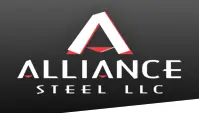What is the difference between Iron and Steel?
These two terms are used interchangeably, but do they mean the same thing? The short answer, no.
Iron, a chemical element with the symbol FE, is the fourth most common element on the earth's crust by weight, and the earth's core is thought to be mostly iron. Steel is an alloy meaning it comprises two or more different elements, one of them being iron. Continuing reading for an in-depth comparison between Iron and Steel.

What is the origin of Iron and Steel?
Iron is an essential factor in many segments of life, from being a vital element for steel to producing chlorophyll in plants and even carrying oxygen in your blood. History believes that iron has been used for over 5,000 years. But, according to Live Science, “some of the earliest iron know to humanity fell from the sky”.
Steel is an alloy of iron and carbon and can be traced back 4,000 years to the start of the iron age. While we can't attribute the creation of steel to one person, history tells us that in the 13th century BC, blacksmiths discovered the capabilities of iron. Today, there are two processes for making steel. The first one is a blast furnace and the second one being an electric arc furnace (EAF). Typically speaking, steel contains up to about 2 percent carbon. Steel can be specified to create different types of alloys, each with its unique capabilities. There are five other alloys, chromium, molybdenum vanadium, manganese, and nickel.
Adding chromium to create Stainless Steel.
Stainless Steel is a versatile metal offering excellent strength and rust protection at an affordable price. Chromium is added to steel above 11% to create stainless steel, creating a protective layer.
Adding vanadium to create stronger and lighter steel.
Did you know that Henry Ford adding vanadium to steel on the 1908 Model T Car Chassis? According to Vanadiumprice.com, "twenty years ago no vanadium went into cars, versus around 45 percent today. By 2025 it's estimated that 85 percent of all automobiles will incorporate vanadium alloy to reduce their weight, thereby increasing their fuel efficiency".
What is Pig Iron?
Pig iron is also known as crude iron. It's a creation of iron ore, charcoal, and limestone being melted together under high air pressure. It's an intermediate product that can be made into wrought Iron or Steel. Pig Iron has a very high carbon content, higher than 2%.
What is the Different in Properties: Steel vs. Iron?
Is there a strength difference between Steel vs. Iron?
Yes, steel is more substantial than Iron; Steel has a lower carbon content which increases strength. In addition, steel is more malleable and is less likely to bend, deform over time, making it a suitable replacement in construction and infrastructure.
Is there a difference in corrosion between Steel vs. Iron?
Both Steel and Iron will rust when it meets water or air. Corrosion happens when a surface is exposed to oxygen, forming rust.
Steel is coated with zinc to help prevent corrosion.
The zinc reacts with oxygen when exposed to the atmosphere, forming a zinc oxide that reacts with carbon dioxide to form zinc carbonate. As a result, it stops further corrosion in many circumstances, protecting steel from the elements.
What is the Durability difference between Steel vs. Iron?
Steel is very durable and can withstand harsh conditions. In addition, because it's an alloy (bonded with iron and carbon), it has an advantage in locations where there are severe winds, higher temperatures, and frequent storms.
Iron is a porous material, making it susceptible to mold, rust, and other oxidation forms.
These oxidation forms reduce the durability of iron, leaving the material to rot, twist, or crack.
Is Steel or Iron more versatile?
If you are looking for versatility, steel is the correct choice. Steel can be shaped, bent, molded, and cut to fit specific implantation.
Pure iron is a soft material, making it unfit for many applications. To be used in infrastructures or construction applications, pure iron needs to become an alloy.
Is there a color difference between Steel vs. Iron?
Typically, steel has a silver color; however, these changes depending on alloys and coatings.
Iron, the naturally occurring element, is a silver-grey color.
What are some typical applications for steel?
Three significant applications for steel include buildings and infrastructure, mechanical equipment, and automotive.
What are some typical applications for iron?
Three significant applications for iron include a primary ingredient of metals and alloys, magnets, and fabricated metal products.
Alliance Steel is a top flat-rolled steel supplier, coil processor, and material distributor dedicated to supporting various manufacturing needs across many industrial sectors. We have been a leader in flat-roll steel supply and coil processing leader for over 20 years.
In May of 2020, we relocated to Gary, Indiana, strategically placing ourselves near significant highways, mills, and ports. There are also two additional sales locations in the Mid- South (Atlanta and Memphis).
Our temperature-controlled 300,000 square foot facility is equipped with full rail service, multiple slitters, including a heavy-gauge line, numerous fiber lasers, multi–blanking, cut to length, stretcher leveling, and metallurgical capabilities.
Alliance Steel is prepared to support your steel needs with an extensive inventory of flat-rolled sheet and coil products. We maintain a selection of hot rolled steel, hot rolled pickled and oiled, hot rolled pickled dry, cold-rolled steel, motor lam, all coated products steel products. For more information, please call 219-427-5400 or send us a contact form.
